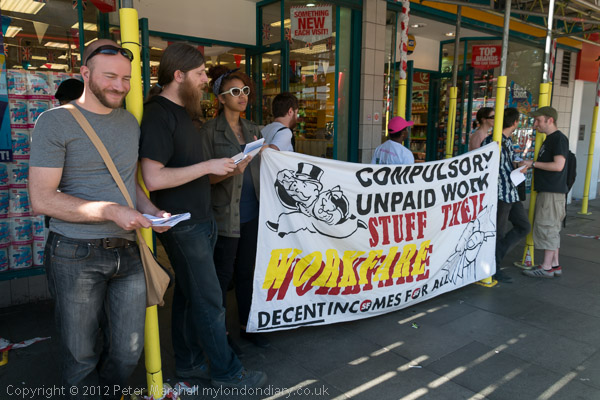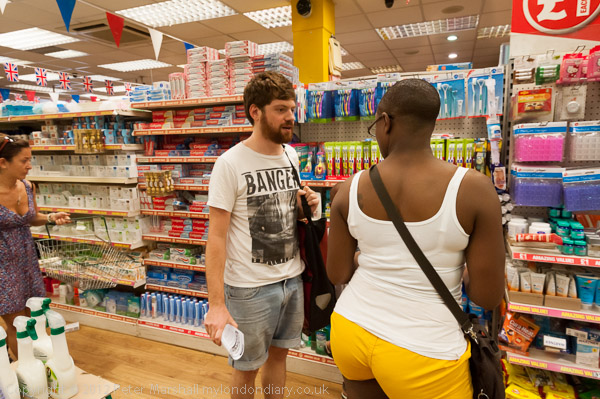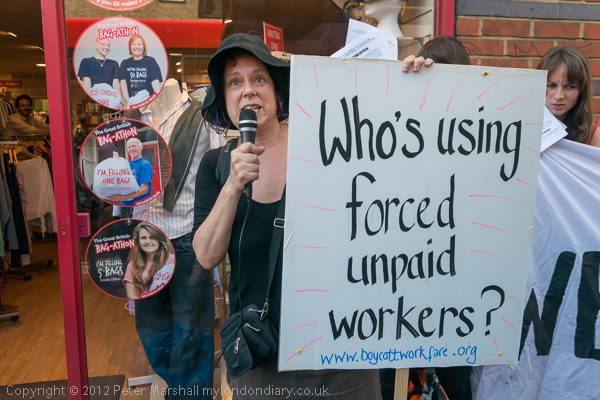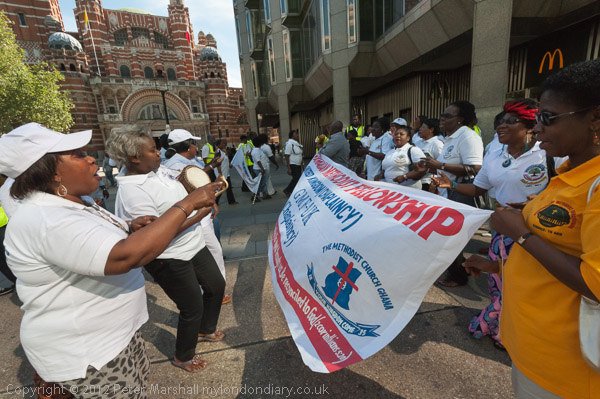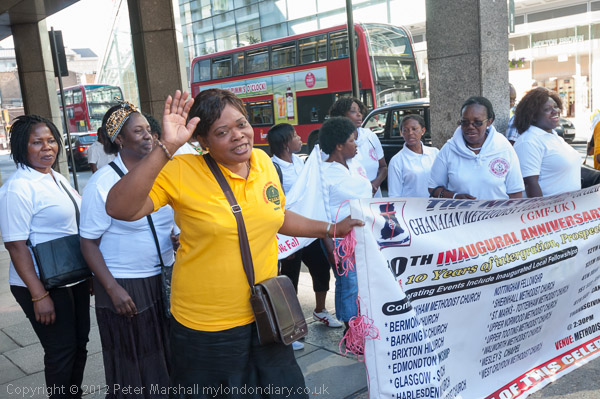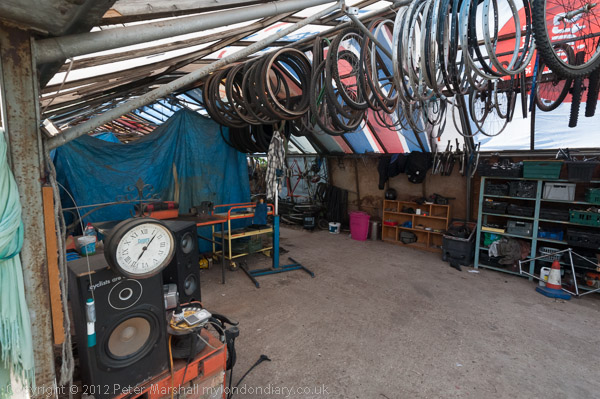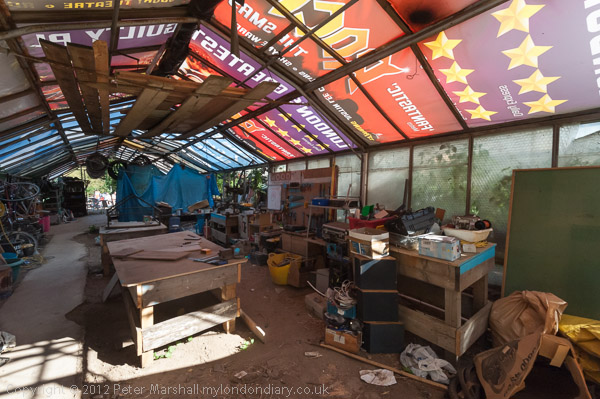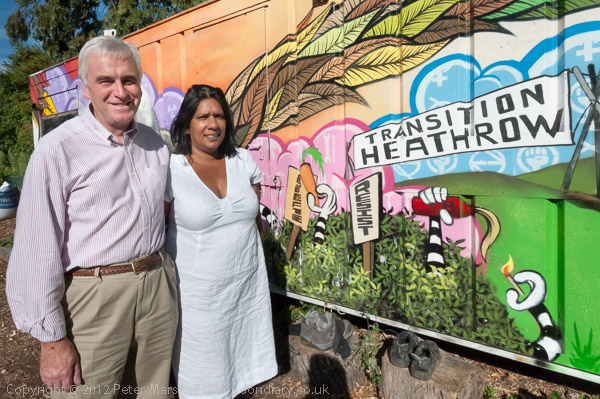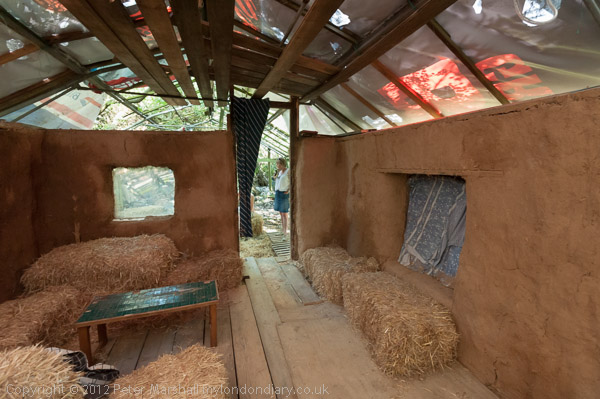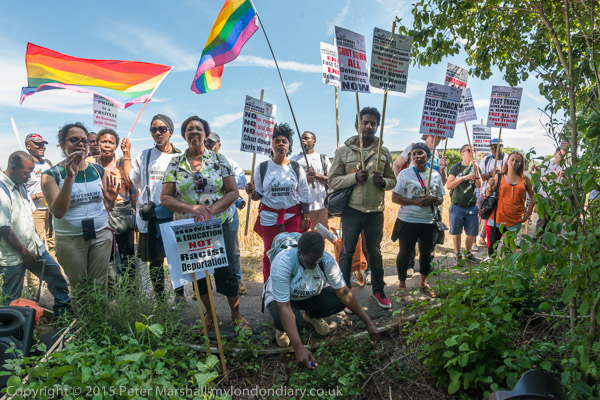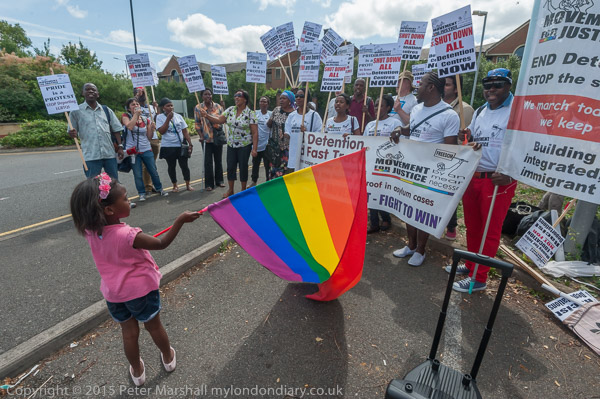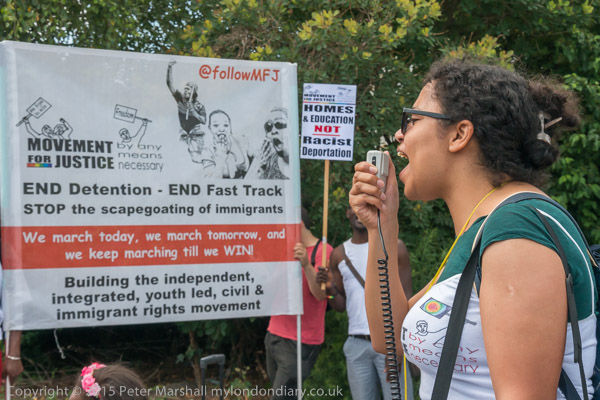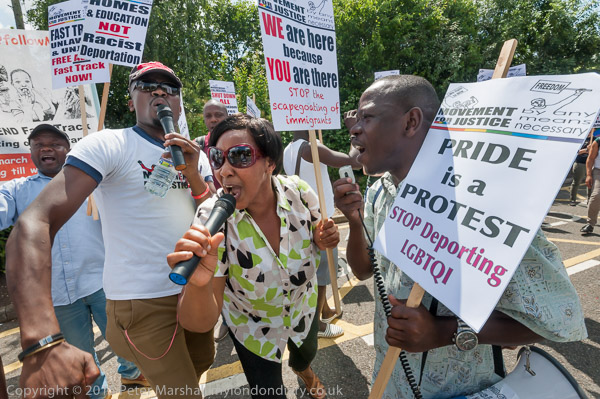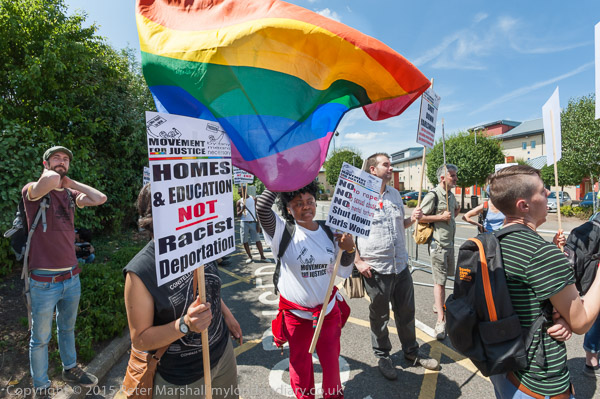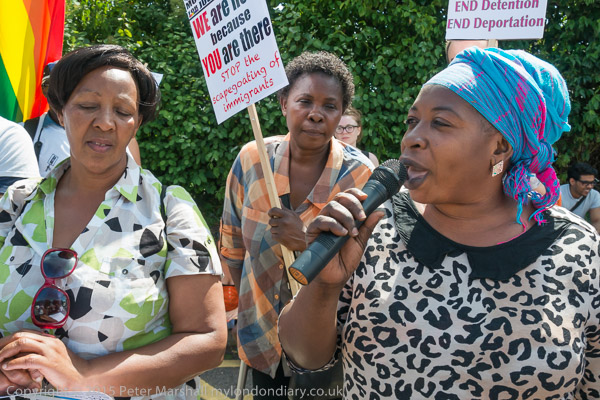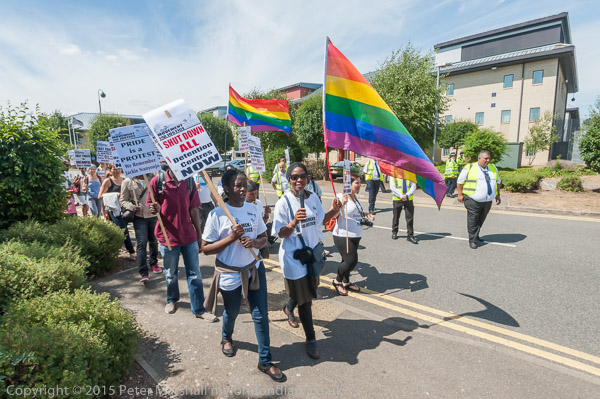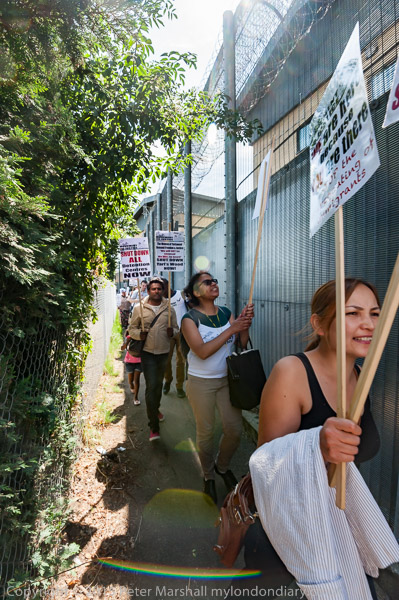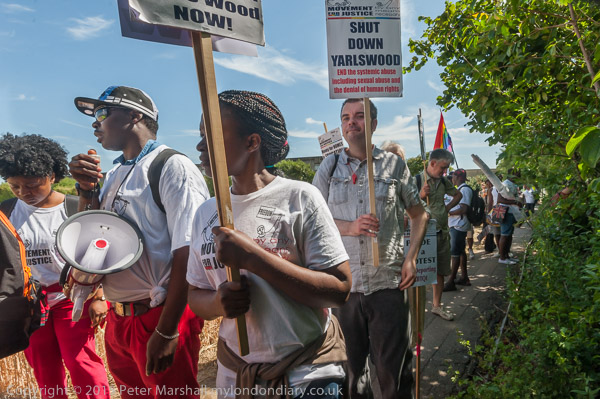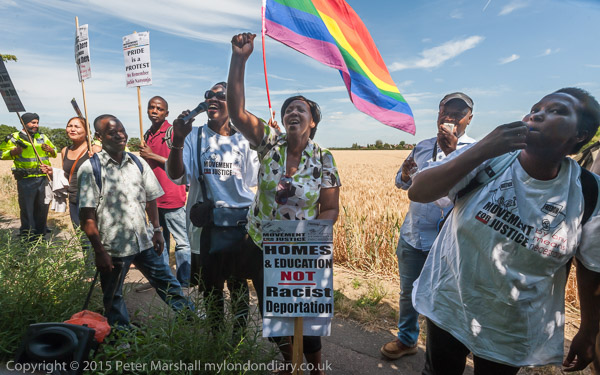Heathrow Villages fight for survival: On Sunday 12th April 2015 in the run up to the 2015 General Election, campaigners launched a renewed fight against the expansion of Heathrow which threatens to swallow up much of the area, showing again the local determination to protect its historic community against a third runway.
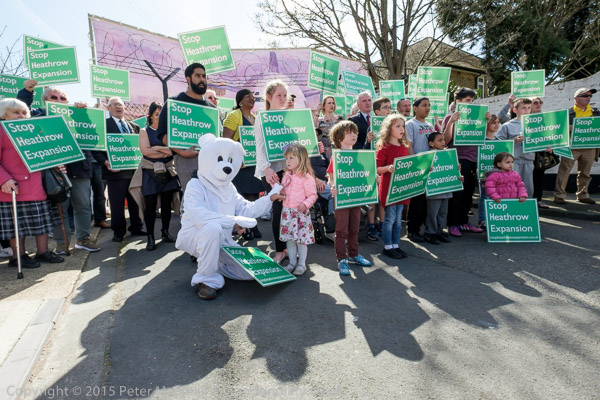
As a fairly local resident although on the other side of Heathrow I’d been involved in the successful campaign a dozen years earlier against the expansion, which had eventually convinced all political parties that expansion at Heathrow was politically impossible. And when the 2010 election put a Tory Lib-Dem coalition into power plans were cancelled as the Lib-Dems had always strongly opposed them.

But Heathrow had not taken NO for an answer and had continued to spend a considerable amount lobbying for it, including setting up a heavily funded PR organisation called ‘Back Heathrow’ to come up with spurious survey results suggesting local backing for expansion.
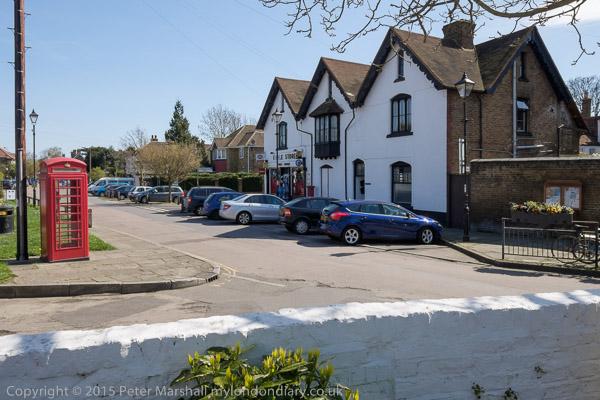
In 2012 the coalition government set up an Airports Commission led by Sir Howard Davies who had held many leading roles as an economist for both governments and private companies and who when appointed resigned from his roles as an adviser to GIC Private Limited, formerly known as Government of Singapore Investment Corporation, a part owner of Heathrow.
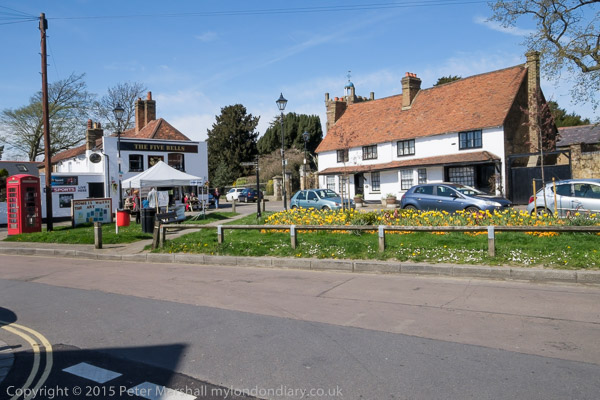
Officially the commission’s role was to consider how the UK could “maintain its status as an international hub for aviation and immediate actions to improve the use of existing runway capacity in the next 5 years” but unofficially it was designed to produce a political consensus in its final report in Summer 2015 that would put Heathrow expansion back on track.
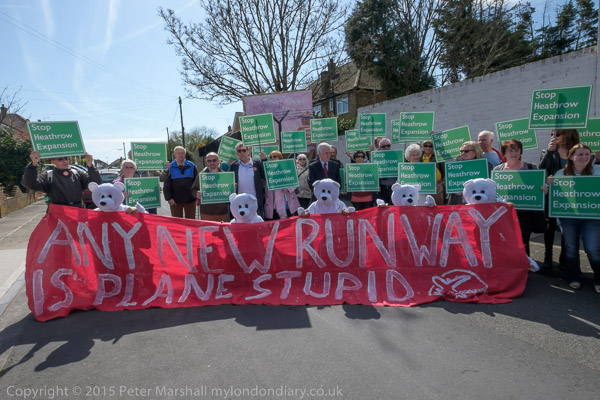
In October 2016 the Tories under Theresa May made a third runway and a new terminal a central Government policy, and in June 2018 the House of Commons voted by a large majority in favour, despite the opposition or abstention of most London MPs.
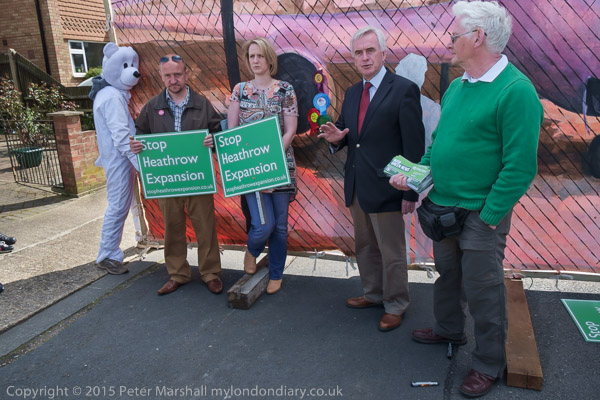
The Supreme Court in 2020 ruled the government’s decision had been unlawful as they had not taken their committments to climate change under the Paris agreement into account. The government then accepted the judgement, but Heathrow appealed and won, with the ban being lifted.
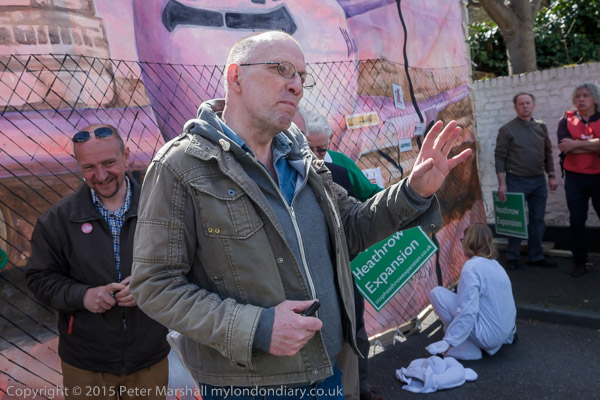
However the plans have so far not gone ahead, in part because governments have not agreed to pick up the huge infrastructure costs around the airport that would be required and that Heathrow were unwilling to finance.

When the right-wing led Labour government came to power in 2024, they immediately set about making changes to the planning process that would enable developments like Heathrow to go ahead with little or no proper examination and inquiries. And in January 2025 they “confirmed it was the new Labour government’s plan to proceed with a third runway within the current parliamentary term.”

However the arguments against expansion continue to grow in strength, particularly on environmental grounds and the Trump-initiated slump in world trade seems likely to damage the economic arguments for expansion as well as increase the already huge costs of the project. So it still seems unlikely that it will happen, and certainly not by the “projected completion date around 2040.”

You can read more about the activities in Harmondsworth around the village centre back in April 2015 on My London Diary and see the strength of the local opposition back then. There were Morris Dancers performing outside the village pubs and inside the incredible Grade I listed Great Barn and a rally with the Plane Stupid polar bear, speeches from the general election candidates and protesters on what would be the new Heathrow boundary in the village centre.

Heathrow has of course promised the Great Barn would be protected along with the fine part 12th Century Parish Church, but they would not be the same without their context.

Heathrow represents a huge failure by successive governments over many years to set up a new major airport for London at some more suitable location. Even when opened as a civil airport in 1946 it was not a particularly suitable location, though when relatively small and quiet aircraft such as the DC3 were in use it was not a great problem. But once these began to be replaced by larger noisier and more polluting jets and passenger numbers and traffic in the surrounding area shot up the need to close it and move to a new location was clear. Heathrow’s answer was always to expand and make the problems worse, building new terminals (and actually closing runways that had become too short for the newer aircraft.) Heathrow should have been closed down years ago – and would have been a great site for a new town.
Heathrow Villages fight for survival.
Flickr – Facebook – My London Diary – Hull Photos – Lea Valley – Paris
London’s Industrial Heritage – London Photos
All photographs on this page are copyright © Peter Marshall.
Contact me to buy prints or licence to reproduce.




